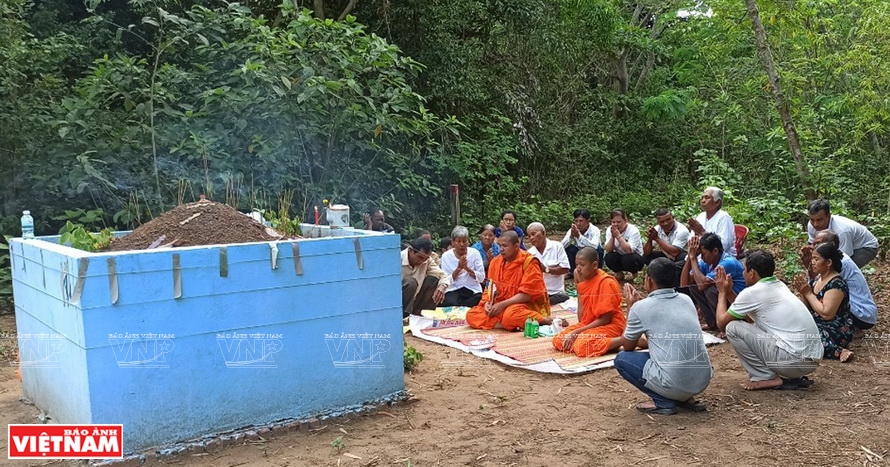The traditional New Year’s festival of the Khmer, known as Chol Chnam Thmay and held from April 14-16 is not only a time for unity, but also an occasion for the Khmer to pay tribute to their ancestors.
On festival days, the villages of the Khmer are always bustling. The locals decorate their homes and go to the pagoda to support monks in cleaning the temple as well as preparing for the festival. For the Khmer, the pagoda plays an important role in their cultural life. All religious rituals and communal activities take place in the pagodas. The Khmer has an attachment to the pagoda from birth until death.
The ritual of Maha Sangkran marks the end of the year and the beginning of a new one.
A ritual during Chol Chnam Thmay festival.
Offering food to monks at Khmer pagodas is an important ritual during the festival.
Blessing at the festival. |
Chol Chnam Thmay takes place on the 14th, 15th and 16th of April every year. During the festival, the Khmer go to their pagodas to pray for happiness and a good harvest in the new year. The event also is an opportunity for the Khmer to show respect to their ancestors. |
Many rituals imbued with Buddhist cultural beliefs of the Khmer community take place during the Chol Chnam Thmay festival. On the first day of celebrating (called Chol Sangkraan Thma), villagers dress up and take offerings to the local pagodas for the mahasangkran procession ceremony and say a prayer for the new year.
On the second day, called Wonbof, the families offer food to monks and build a hillock of sand in front of the pagodas to pray for good weather and a bumper crop. The villagers prepare water and fresh flowers and then attend the Buddhist bathing ceremony in the pagodas on the last day called Lom Sak.
Making banh tet during the traditional festival.
The Buddhist bathing ceremony at the festival.
Building a hillock of sand to pray for best wishes in the new year.

A ritual to worship the ancestors.
The Khmer flock to the pagodas during their traditional festival.
|
In addition to these important rituals, young people play folk games, including splashing water, blindfolding, pot smashing and bag jumping.
Soc Trang province is home to many well-known pagodas of the Khmer such as Doi, Chen Kieu, Kh’Leang, Som Rong and Bon Mat (four faces). The pagodas are visited by locals as well as tourists during the festival./.
Story: Le Minh Photos: Chanh Da Translated by Nguyen Tuoi